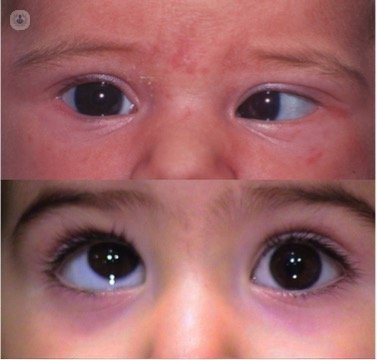The consequence of childhood strabismus is the lazy eye
Written by:Strabismus is the misalignment of the eye relative to the other so that each eye looks in a different direction. Strabismus usually appears in childhood, but in some cases may be initiated into adulthood.
 Strabismus can be caused by an optical defect, being more frequent farsightedness, or any eye disease that causes severe visual deficits, such as a waterfall or even a tumor, paralysis of the nerves responsible for moving the eye muscles or diseases own muscles. However, in the vast majority of cases of childhood strabismus is not a particular case and considered that strabismus is caused by a malfunction of the brain system responsible for the coordination of eye movement system.
Strabismus can be caused by an optical defect, being more frequent farsightedness, or any eye disease that causes severe visual deficits, such as a waterfall or even a tumor, paralysis of the nerves responsible for moving the eye muscles or diseases own muscles. However, in the vast majority of cases of childhood strabismus is not a particular case and considered that strabismus is caused by a malfunction of the brain system responsible for the coordination of eye movement system.
It is important that the specialist in ophthalmology examine as soon as possible to the child with a squint to detect those cases are caused by an eye disease or an optical defect that will require early treatment.
Child Strabismus, if untreated, can lead a lazy eye that will be harder to solve the higher the child. When strabismus begins in adulthood it causes double vision.
Treatment of strabismus is, first, to correct the optical defects that may exist, then treat lazy eye if it is at the bottom at 8-10 years old, as in older ages is almost impossible. Finally, if despite this, there is still a deviation must perform surgery on the eye muscles to correct its position.
The surgery can be done at any age, not only in children but in adults. The desirability of early surgery to one year of age or later between 4-6 years depending on the type of strabismus in question. Sometimes it requires more than one intervention either because still persists after wandering eye or because although initially it has been corrected over the years has appeared a new deviation in adulthood. That strabismus that comes back years later can also be operated again.
Strabismus causes a defect in the visual function, a cosmetic defect, and as a result thereof a psychological problem of self-esteem in adults should not neglect.


